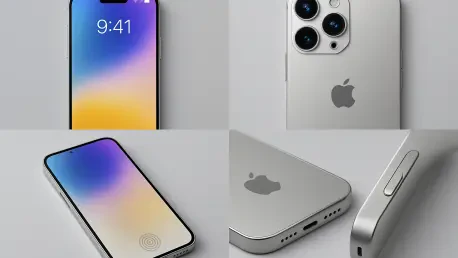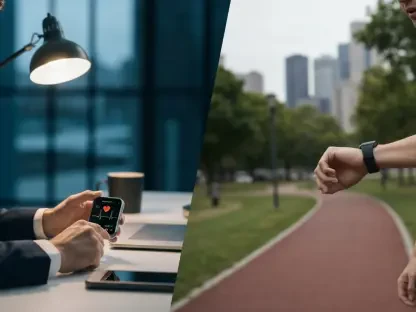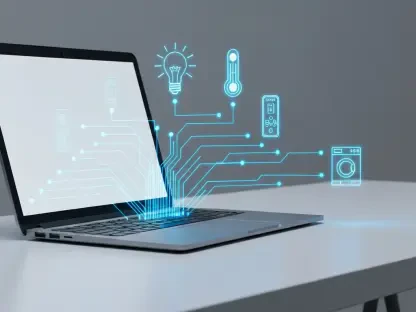I’m thrilled to sit down with Nia Christair, a renowned expert in mobile technology with a deep background in mobile gaming, app development, device design, and enterprise solutions. With Apple’s highly anticipated hardware event on the horizon, rumored to take place on September 9, we’re diving into the buzz surrounding the iPhone 17 lineup, including whispers of bigger screens, camera redesigns, and the ultra-slim iPhone Air. We’ll also touch on updates to the Apple Watch and AirPods, exploring how these innovations might shape user experiences and market trends. Let’s unpack what’s coming and what it means for Apple fans and tech enthusiasts alike.
How do you see the rumored upgrades for the standard iPhone 17, like the larger 6.3-inch screen and the jump to a 120Hz display, changing the game for everyday users?
I think these changes are a big deal for the standard iPhone 17. A 6.3-inch screen, even if it’s just a 0.2-inch increase, offers a bit more real estate for everything from streaming to multitasking, which feels more premium without stepping into Pro territory. But the real game-changer is the 120Hz display. Moving from 60Hz to 120Hz means smoother scrolling, more responsive animations, and just a snappier feel overall. For everyday users, it’s going to make the phone feel faster, even if they’re just browsing social media or playing casual games. It’s a quality-of-life upgrade that brings the base model closer to the Pro experience, and I think people will notice the difference immediately.
What’s your take on the new color options like purple and green for the iPhone 17—do they have broad appeal, or are they targeting a specific crowd?
Color trends are always fascinating with Apple, and purple and green are bold choices. I think they’ll resonate well with younger users or those who want their device to stand out a bit more. Purple, especially, has this modern, trendy vibe that could pull in a wide audience, while green often feels fresh and nature-inspired. That said, they might not be for everyone—some users stick to classic shades like black or silver for a more professional or timeless look. Apple usually balances these vibrant options with neutral tones, so I suspect they’re aiming to cater to both the adventurous and the conservative. It’s a smart way to refresh the lineup’s appeal without alienating anyone.
Let’s talk about the iPhone 17 Pro’s rumored rear camera redesign with a rectangular bar layout. How do you envision this impacting the phone’s aesthetic and functionality?
The rectangular bar design for the rear cameras is an interesting shift. If the rumors are accurate, stretching the camera module across the back could create a more streamlined, almost futuristic look compared to the current square bump. It might make the phone appear less cluttered visually, which is a plus for aesthetics. Functionally, repositioning elements like the flash, light sensor, and microphone to the side of this bar could optimize space on the back, potentially allowing for better heat dissipation or even a larger battery. However, it might take some getting used to for users who instinctively reach for certain spots during photography. I’m curious to see if Apple uses this redesign to enhance camera capabilities further, like improved low-light performance or new sensor tech.
There’s speculation that the iPhone 17 Pro might swap its titanium band for aluminum. What do you think this change could mean for the user experience and Apple’s strategy?
Switching from titanium to aluminum is a surprising move, if true. Titanium gave the Pro models a premium, durable feel, and it’s incredibly lightweight for its strength. Aluminum, while still light, might not carry the same high-end perception, and some users could interpret it as a downgrade. On the flip side, it could lower production costs for Apple, which might help keep prices in check or boost margins. For users, aluminum could mean a slightly different texture or thermal feel in hand, and it’s still plenty durable for daily use. I think Apple’s strategy here might be to prioritize cost efficiency while banking on other upgrades—like camera or display tech—to maintain that premium allure. It’ll be interesting to see how they spin this in marketing.
With the iPhone 17 Pro Max reportedly getting a thicker body for a larger battery, how do you weigh the importance of battery life against a slim design in today’s market?
Battery life is consistently one of the top priorities for smartphone users today. People are using their devices for everything—work, entertainment, navigation—and a longer-lasting battery can be a lifesaver. A slightly thicker body on the iPhone 17 Pro Max to accommodate that is a trade-off most users will happily accept, especially if it means getting through a full day without scrambling for a charger. Slim design is still important, no doubt, as it ties into comfort and portability, but I think the market has shifted toward valuing functionality over shaving off a few millimeters. As long as the phone doesn’t feel bulky or unwieldy, I don’t see this as a dealbreaker for most buyers.
Rumors of the iPhone Air suggest it could be Apple’s thinnest phone ever at 5.5 mm. How do you think this ultra-slim design will balance style with practical compromises like a single rear camera?
The iPhone Air, if it’s truly 5.5 mm thin, is a bold statement from Apple in the style department. It’s clearly a response to the trend of ultra-slim devices and positions Apple as a leader in that space. Aesthetically, it’s going to turn heads—thin phones just scream sophistication. But the compromises are real. A single rear camera, for instance, limits versatility compared to dual or triple setups on other models. You might lose out on ultra-wide shots or advanced zoom, which could frustrate photography enthusiasts. Rumors of limited speaker space also raise concerns about audio quality. I think Apple is targeting a specific audience here—those who prioritize design and portability over raw functionality. It’ll likely appeal to fashion-forward users or those who don’t need heavy camera features, but it won’t be for everyone.
Looking at the Apple Watch updates, especially the potential for blood pressure monitoring in the Series 11 and Ultra 3, how significant do you think health features are becoming in wearable tech?
Health features are absolutely central to the evolution of wearable tech right now, and Apple has been at the forefront of this trend. Blood pressure monitoring in the Series 11 and Ultra 3, if it happens, could be a massive step forward. It’s not just about convenience; it’s about empowering users to track vital health metrics in real time, potentially catching issues before they escalate. Features like sleep apnea detection, also rumored, add even more value. For many, the Apple Watch is becoming less of a gadget and more of a health companion. This focus on wellness differentiates wearables from other tech and builds incredible loyalty—people see these devices as tools for better living. I think we’ll see health features continue to drive sales and innovation in this space for years to come.
With the AirPods Pro 3 rumored to feature a sleeker design and enhanced noise cancellation, what do you think Apple needs to do to keep pushing the envelope in the wireless earbud market?
The wireless earbud market is fiercely competitive, and Apple has to keep innovating to stay ahead. A sleeker design for the AirPods Pro 3 is a good start—it makes them more comfortable for long wear and ups the style factor. Enhanced noise cancellation via the rumored H3 chip is also critical; users expect top-tier performance in noisy environments, whether they’re commuting or working in busy spaces. But to really push the envelope, I think Apple needs to focus on personalization—think adaptive audio that adjusts even more intelligently to surroundings or customizable fit options. Battery life improvements and seamless integration with other Apple devices are also areas where they can stand out. It’s about refining the experience to feel effortless while adding features that competitors haven’t thought of yet.
What’s your forecast for how these rumored Apple hardware updates will shape the tech landscape over the next year?
I expect these updates to reinforce Apple’s position as a trendsetter in the tech world over the next year. The iPhone 17 lineup, especially with features like 120Hz displays on base models and the ultra-thin iPhone Air, will likely push competitors to up their game in design and display tech. The focus on health with the Apple Watch could accelerate the integration of medical-grade features in wearables across brands, making wellness a standard expectation. AirPods Pro 3’s advancements might pressure other audio companies to innovate in noise cancellation and form factor. Overall, Apple’s moves will set a high bar, driving the industry toward thinner, smarter, and more user-centric devices. I think we’ll see a ripple effect where even budget brands start adopting similar ideas, which ultimately benefits consumers with more choice and better tech.









